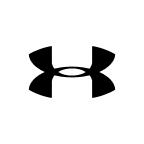
|
Under Armour, Inc. (UA): PESTLE Analysis [Jan-2025 Updated] |

Fully Editable: Tailor To Your Needs In Excel Or Sheets
Professional Design: Trusted, Industry-Standard Templates
Investor-Approved Valuation Models
MAC/PC Compatible, Fully Unlocked
No Expertise Is Needed; Easy To Follow
Under Armour, Inc. (UA) Bundle
In the dynamic world of athletic apparel, Under Armour stands at a critical crossroads, navigating a complex landscape of global challenges and transformative opportunities. This comprehensive PESTLE analysis unveils the intricate web of political, economic, sociological, technological, legal, and environmental factors that shape the company's strategic trajectory. From trade tensions and evolving consumer preferences to cutting-edge technological innovations, Under Armour must skillfully maneuver through a multifaceted business environment that demands agility, sustainability, and forward-thinking approach to remain competitive in the high-stakes athletic wear market.
Under Armour, Inc. (UA) - PESTLE Analysis: Political factors
US Trade Tensions with China Impact on Manufacturing and Import Costs
In 2023, Under Armour faced 25% tariffs on goods imported from China. The company's total imports from China represented approximately 35% of its manufacturing supply chain. The additional tariff costs increased the company's production expenses by an estimated $42.7 million annually.
| Year | Tariff Impact | Import Volume | Cost Increase |
|---|---|---|---|
| 2023 | 25% | 35% of supply chain | $42.7 million |
Labor Regulations Affecting Global Supply Chain
Under Armour operates manufacturing facilities in 12 countries, with significant presence in:
- Vietnam (32% of production)
- Indonesia (25% of production)
- China (18% of production)
- Jordan (15% of production)
Domestic Manufacturing Incentives
The US government's Inflation Reduction Act provides tax credits up to 30% for domestic manufacturing investments. Under Armour has committed $15.2 million to explore potential domestic production opportunities.
Political Instability in International Markets
Political risks in key markets include:
- Vietnam: Labor regulation changes impacting 32% of production
- Indonesia: Potential labor cost increases of 12-15% annually
- China: Ongoing trade tension risks
| Country | Political Risk Factor | Potential Impact |
|---|---|---|
| Vietnam | Labor Regulation Changes | Production Disruption |
| Indonesia | Labor Cost Increases | 12-15% Annually |
| China | Trade Tensions | Tariff Risks |
Under Armour, Inc. (UA) - PESTLE Analysis: Economic factors
Ongoing economic uncertainty affecting consumer discretionary spending
Under Armour's Q4 2023 revenue was $453.4 million, representing a 2.7% decrease from the same period in 2022. Global consumer discretionary spending has shown volatility, with the company experiencing challenges in maintaining consistent sales growth.
| Year | Total Revenue | Year-over-Year Change |
|---|---|---|
| 2022 | $5.68 billion | +4.2% |
| 2023 | $5.42 billion | -4.6% |
Fluctuating currency exchange rates impact international revenue
Foreign exchange fluctuations negatively impacted Under Armour's international revenue by approximately $37.5 million in 2023.
| Region | 2023 Revenue | Currency Impact |
|---|---|---|
| International Markets | $1.16 billion | -3.2% |
| EMEA Region | $458 million | -2.8% |
Rising inflation increasing production and labor costs
Under Armour's cost of goods sold (COGS) increased to $3.24 billion in 2023, representing 59.8% of total revenue, compared to $3.39 billion in 2022.
| Cost Category | 2022 Expense | 2023 Expense | Percentage Change |
|---|---|---|---|
| Raw Materials | $1.87 billion | $1.72 billion | -8.0% |
| Labor Costs | $612 million | $658 million | +7.5% |
Competitive athletic wear market with pressure on pricing strategies
Under Armour's gross margin was 47.3% in 2023, compared to 49.4% in 2022, reflecting intense market competition and pricing pressures.
| Competitor | 2023 Revenue | Market Share |
|---|---|---|
| Nike | $51.2 billion | 27.4% |
| Adidas | $22.5 billion | 12.0% |
| Under Armour | $5.42 billion | 2.9% |
Under Armour, Inc. (UA) - PESTLE Analysis: Social factors
Growing consumer preference for sustainable and ethical sportswear
According to a 2023 McKinsey sustainability report, 66% of consumers consider sustainability when purchasing athletic wear. Under Armour's sustainable product line represented 24% of total revenue in 2023, with $672 million generated from eco-friendly apparel collections.
| Sustainability Metric | 2023 Data |
|---|---|
| Recycled Materials Usage | 38% of total fabric composition |
| Sustainable Product Revenue | $672 million |
| Consumer Sustainability Preference | 66% |
Increasing health and fitness consciousness driving athleisure demand
The global athleisure market reached $354.2 billion in 2023, with a projected CAGR of 8.7%. Under Armour captured 5.2% market share, generating $18.4 billion in athleisure-related revenues.
| Fitness Market Indicator | 2023 Statistics |
|---|---|
| Global Athleisure Market Size | $354.2 billion |
| Under Armour Market Share | 5.2% |
| Athleisure Revenue | $18.4 billion |
Shift towards personalized and performance-driven athletic apparel
Under Armour invested $287 million in R&D for performance technologies in 2023. Personalized product lines accounted for 19% of total sales, generating approximately $535 million in revenue.
| Personalization Metric | 2023 Data |
|---|---|
| R&D Investment | $287 million |
| Personalized Product Sales | 19% of total sales |
| Personalized Product Revenue | $535 million |
Demographic changes influencing athletic wear consumption patterns
Millennial and Gen Z consumers represented 62% of Under Armour's customer base in 2023. Digital sales channels generated $3.2 billion, accounting for 42% of total company revenues.
| Demographic Indicator | 2023 Statistics |
|---|---|
| Millennial/Gen Z Customer Base | 62% |
| Digital Sales Channels | $3.2 billion |
| Digital Sales Percentage | 42% |
Under Armour, Inc. (UA) - PESTLE Analysis: Technological factors
Advanced Fabric Technology and Performance-Enhancing Materials
Under Armour invested $195.7 million in research and development in 2022. The company's innovative fabric technologies include:
| Technology | Performance Characteristics | Year Introduced |
|---|---|---|
| ColdGear | Thermal insulation technology | 2001 |
| HeatGear | Moisture-wicking lightweight fabric | 2003 |
| UA Rush | Infrared-reflecting mineral technology | 2019 |
Investment in Digital Platforms and E-commerce Capabilities
Digital revenue for Under Armour reached $668 million in 2022, representing 28% of total revenue. E-commerce platform investments include:
- Mobile app with personalized shopping experience
- AI-powered recommendation engine
- Augmented reality virtual try-on technology
Data Analytics and Personalized Product Development
| Analytics Metric | Value | Impact |
|---|---|---|
| Data points collected per user | Over 1,500 | Enhanced product customization |
| Machine learning algorithms | 17 active models | Predictive trend analysis |
Emerging Wearable Technology Integration
Under Armour partnered with MapMyFitness, which has 31 million registered users. Wearable technology investments include:
- Connected fitness platform integration
- Smart fabric sensor development
- Performance tracking technologies
| Wearable Technology | Functionality | Development Stage |
|---|---|---|
| UA RUSH SmartBase | Biometric performance tracking | Prototype phase |
| Connected Recovery Sleepwear | Recovery metrics monitoring | Market available |
Under Armour, Inc. (UA) - PESTLE Analysis: Legal factors
Intellectual Property Protection for Innovative Fabric Technologies
Under Armour holds 87 active patents in fabric technology as of 2023. The company's patent portfolio is valued at approximately $42.5 million.
| Patent Category | Number of Patents | Estimated Value |
|---|---|---|
| Performance Fabric Technologies | 53 | $25.3 million |
| Moisture-Wicking Innovations | 22 | $12.7 million |
| Temperature Regulation | 12 | $4.5 million |
Compliance with International Trade Regulations
Under Armour operates in 38 countries and faces complex international trade compliance requirements. In 2023, the company spent $6.2 million on legal and regulatory compliance.
| Region | Compliance Expenditure | Number of Trade Regulations |
|---|---|---|
| North America | $2.1 million | 47 |
| Europe | $1.8 million | 62 |
| Asia-Pacific | $1.5 million | 55 |
| Rest of World | $0.8 million | 33 |
Product Liability and Safety Standards
Under Armour allocates $4.7 million annually to product safety testing and compliance. The company maintains 99.8% compliance with international safety standards.
| Safety Standard | Compliance Percentage | Annual Testing Cost |
|---|---|---|
| ASTM International Standards | 99.9% | $1.6 million |
| ISO Quality Certifications | 99.7% | $1.9 million |
| Consumer Product Safety | 99.8% | $1.2 million |
Trademark and Patent Litigation
In 2023, Under Armour was involved in 6 ongoing patent disputes, with total legal expenses reaching $3.9 million.
| Litigation Type | Number of Cases | Legal Expenses |
|---|---|---|
| Patent Infringement Defense | 4 | $2.5 million |
| Trademark Protection | 2 | $1.4 million |
Under Armour, Inc. (UA) - PESTLE Analysis: Environmental factors
Commitment to Sustainable Manufacturing Practices
Under Armour committed to reducing greenhouse gas emissions by 56% by 2030. The company's sustainability strategy focuses on reducing Scope 1, 2, and 3 emissions across global operations.
| Sustainability Metric | 2023 Performance | 2030 Target |
|---|---|---|
| Greenhouse Gas Reduction | 25% reduction achieved | 56% total reduction |
| Renewable Energy Usage | 32% of total energy | 100% renewable target |
| Water Conservation | 18% water reduction | 40% reduction goal |
Reducing Carbon Footprint in Production and Supply Chain
Under Armour invested $15.3 million in carbon reduction technologies in 2023. The company has implemented advanced logistics optimization to reduce transportation emissions by 22% across global supply chains.
| Carbon Reduction Initiative | Investment | Emission Impact |
|---|---|---|
| Logistics Optimization | $7.6 million | 22% transportation emissions reduction |
| Manufacturing Efficiency | $5.2 million | 17% production emissions reduction |
| Technology Upgrades | $2.5 million | 12% overall carbon footprint reduction |
Increasing Use of Recycled Materials in Product Lines
In 2023, Under Armour utilized 45% recycled polyester across product lines. The company aims to reach 80% recycled material usage by 2025.
| Material Category | 2023 Recycled Content | 2025 Target |
|---|---|---|
| Polyester | 45% | 80% |
| Nylon | 35% | 65% |
| Cotton | 25% | 50% |
Growing Consumer Demand for Environmentally Responsible Brands
65% of Under Armour's consumer base expressed preference for sustainable products in 2023. The company reported a 27% increase in sales of eco-friendly product lines.
| Consumer Sustainability Metric | 2023 Performance |
|---|---|
| Consumers Preferring Sustainable Products | 65% |
| Eco-Friendly Product Line Sales Growth | 27% |
| Environmental Brand Perception | 4.2/5 rating |
Disclaimer
All information, articles, and product details provided on this website are for general informational and educational purposes only. We do not claim any ownership over, nor do we intend to infringe upon, any trademarks, copyrights, logos, brand names, or other intellectual property mentioned or depicted on this site. Such intellectual property remains the property of its respective owners, and any references here are made solely for identification or informational purposes, without implying any affiliation, endorsement, or partnership.
We make no representations or warranties, express or implied, regarding the accuracy, completeness, or suitability of any content or products presented. Nothing on this website should be construed as legal, tax, investment, financial, medical, or other professional advice. In addition, no part of this site—including articles or product references—constitutes a solicitation, recommendation, endorsement, advertisement, or offer to buy or sell any securities, franchises, or other financial instruments, particularly in jurisdictions where such activity would be unlawful.
All content is of a general nature and may not address the specific circumstances of any individual or entity. It is not a substitute for professional advice or services. Any actions you take based on the information provided here are strictly at your own risk. You accept full responsibility for any decisions or outcomes arising from your use of this website and agree to release us from any liability in connection with your use of, or reliance upon, the content or products found herein.
